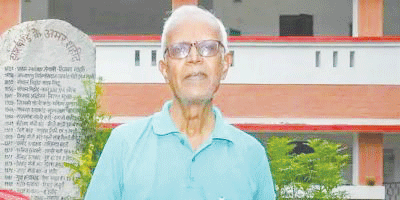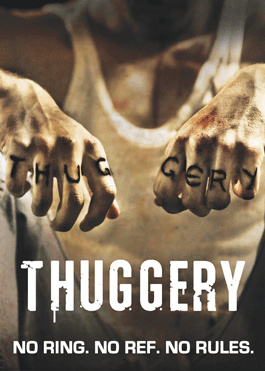Hindutva: Narendra Modi and Amit Shah are the modern day thugs who are promoting genocide against Muslim and Christian communities.
By Satya Sagar
The Hindutva promoted by Narendra Modi and Amit Shah has revived the tradition of thuggery. This is a reference to the bandits who used to murder passengers by strangling them. The comparison is apt as the BJP has been strangling freedom of worship, freedom of speech, and even freedom to eat what you want and wear what you want.
There has been some heated discussion in recent weeks in India about whether the term Hindutva is the same as Hinduism or not.
For those supporting the ruling BJP regime and the Sangh Parivar– the network of organizations spawned by the Rastriya Swayamsevak Sangh – there is no doubt that these two are identical. For opponents of the Sangh Parivar the narrow, sectarian outlook of Hindutva is an affront to the tolerant, pluralistic ethos of Hinduism.
As I attempted to write on the controversy, for some strange reason, an incident from almost three decades ago kept coming back to my mind. It happened when I was finishing my graduation at a university in central India. A classmate of mine told me his grandfather had been a thuggee for much of his life and killed many people in pursuit of his religious belief.
The town I lived in and surrounding areas had been a major center for this secretive cult but I had never expected to meet someone from a family of thuggees and that too a classmate!
Mishraji, as I used to call him, then described how his grandfather, while on his deathbed, had tried to get his son to strangle him. Murder was an essential part of initiation into this ancient cult and the grandfather was desperate to get his son to join – even through patricide if necessary.
Mishraji’s father had mercifully rejected the family tradition, got educated and went on to do a regular office job. Mishraji himself was a normal enough bloke and quite a friendly, happy-go-lucky sort (though after hearing his tale I did keep an arm’s length from him, just in case!).
For those not familiar, the thuggees were a cult of professional murderers and thieves, who operated in large parts of India for long before their secret network was infiltrated and broken up by the British police in the early nineteenth century. The term ‘thug’, which originally meant ‘to deceive’, entered the English language through popular fiction writers who based their novels on this mysterious criminal cult.
You may ask, what could be the contemporary relevance of remembering the thuggees, who were wiped out as an organised cult over a century and a half ago? And that too in the context of the debate on ‘Hindutva’ versus ‘Hinduism’? Well, the link may seem tenuous but, in my opinion, Hindutva is essentially a more ambitious and scaled-up version of the thuggee phenomenon that plagued large parts of India for nearly six centuries.
More on that later but first about the question whether Hindutva, as claimed by the Sangh Parivar, is synonymous with Hinduism or not?
First of all both Hindutva and Hinduism are at their core fuzzy terms, capable of adopting different meanings depending on whoever is telling the story. For V D Savarkar, who coined the term Hindutva in the first half of the twentieth century, it encompassed the cultural, linguistic, political, and social aspects of Hindus, going beyond just the religious dimensions of Hinduism. Savarkar of course also defined the Hindu as “one for whom India is both Fatherland and Holyland” implying that in the ‘Hindu Rashtra’ he sought, those Indians whose faith originated outside the geographical boundaries of India, would not be treated as equal to the Hindus.
The RSS, currently the key advocate of the concept, claims Hindutva is the ‘essence of Hindu dharma or way of life’, which it claims is inherently tolerant of diversity and accepts everyone, regardless of gender, race, religion, ethnicity, and national origin.
Critics of the RSS point out though in reality – irrespective of the rhetoric – Hindutva is a synonym, not for Hinduism, but for aggressive ‘Hindu supremacy’ and antithetical to the religion’s softer, more tolerant traditions. The Sangh Parivar, they say, sees Hindutva as primarily an assertion of control of Hindus, a majority in the Indian population, over power and resources in the country. Given the deep rooted caste system, ‘Hindu supremacy’ also translates into a kind of dictatorship of Hindu upper-castes over all aspects of Indian society.
Going by the policies and action on the ground of the advocates of Hindutva, especially since the coming to power of the Narendra Modi regime in 2014, these criticisms are spot on. In just these last seven years religious minorities such as Muslims, Christians and Sikhs have indeed become second-class citizens in their own country, while the attacks on Dalit and Adivasi communities have also increased.
In my view, the entire debate is a bit pointless though because Hinduism and Hindutva are not comparable terms at all as they are as different as apples and oranges.
With its hundreds of deities, lacking a central text, common rituals or mode of worship Hinduism is not really a ‘religion’ in the modern sense. Instead it should be seen as a catch-all term for a huge collection of many small and big faith systems that evolved on the Indian sub-continent over the millennia and contains a diverse set of spiritual philosophies and practices – ranging from atheism to polytheism.

Hinduism’s indefinability is a source of both its greatest strengths and weaknesses. On the one hand it allows a multiple and often contradictory belief systems to flourish side-by-side and is tolerant – not necessarily by intention but due its decentralized, free for all structure. On the other hand such nebulousness also provides camouflage for numerous groups, individuals and ideas with highly dubious, non-spiritual motivations – of which Hindutva itself is a prime example.
For Hindutva is basically a clever ideological construct that has nothing to do with questions of religion as such. Questions like the existence or non-existence of God, the meaning of life and death, salvation and afterlife or even the morals of day-to-day existence hold no interest for the Sangh Parivar. Hindutva’s advocates and practitioners are instead part of political cult, who seek to grab power in order to radically restructure the modern Indian nation-state, overturn its democratic Constitution and establish Savarkar’s dystopia of the Hindu Rashtra.
And to achieve this narrow goal they have to use Hinduism as a front to consciously crush the diversity of India’s faith systems and centralize them under the political command of the Sangh Parivar.
It is this destructive, cultish nature of Hindutva, its manipulation of faith and sheer unscrupulousness that shows they are primarily modern-day inheritors of the thuggee tradition, which for centuries managed to justify murder and loot with a grand religious narrative. There are many differences too of course but the parallels are quite striking indeed.
Many thuggees (which incidentally included some Muslims too), for example, were worshippers of Bhowanee, an avatar of the Goddess Kali and believed they were helping the deity maintain the worldly balance of good and evil. The claim was that each murder they committed prevented Kali’s arrival, considered an apocalyptical event for humankind, for one millennium.
This is not very different from the self-image of the Hindutva-wallahs as being on some kind of ‘civilizational mission’ to ‘protect Mother India’ and ‘ Save Hinduism’. Of course, to paraphrase an unnamed US Army officer from the Vietnam War, Hindutva’s approach is to ‘destroy Hinduism in order to save it!’.
The thuggees targeted mostly pilgrims visiting holy Hindu or Muslim sites by pretending to be fellow travellers. They would share space, food, water for many days and win their trust before wiping out dozens in the course of just a single night.
Not surprisingly, the real motivation of thuggee cult members was economic, with their victims being only those who had gold, jewellery or money to steal from. Some of this money was donated to temples but much of it went towards their own upkeep.
Ironically, like in the case of the thuggees, the main victims of Hindutva too are people of religion and genuine believers. To attain political power the Hindutva movement uses popular deities like Lord Ram and religious symbols as a front to mobilise ordinary Hindus. Once in control, the main goal, just like with the thuggees, is theft. In this case of course the loot consists of massive public resources, diverted to a small cabal of apparatchiks and corporate chieftains close to it.
One could argue that the Hindutva movement has much public support, while the thuggees won no elections. The fact is that many thuggees were not suspected of being murderous criminals by other Hindus because of their public image of being Kali worshippers.
Many cult members passed off as respectable tax-paying citizens and ordinary householders with normal families. Col. William Sleeman, the British officer credited with putting down the thuggee movement found a close connection and complicity between them and village chiefs and landlords who offered them protection as long as they did not commit murders within their spaces. (And who knows – if elections had been around in those days – many of them might have made winning candidates too!)
Interestingly, the thuggees used their trademark yellow scarves to strangle their victims. It is not a coincidence perhaps that the use of the saffron-tinged yellow scarf, has emerged as the most prominent and menacing symbol of the Hindutva movement too.
Which brings us to the issue of how killing fellow human beings seems to be at the heart of both the thuggee and Hindutva movements. The thuggees are believed to have killed hundreds of thousands over the centuries, with 50,000 plus victims in 1830 alone – a grisly record unmatched by any other religious cult in history.
The Hindutva movement, over the last few decades, has left a trail of death and destruction through various communal riots and attacks on religious minorities but their worst phase is perhaps yet to come. The open call for genocide against Muslims made by self-styled Hindu leaders at a recent ‘Dharam Sansad’ or ‘Religious Parliament’ in Haridwar is a clear indication of their future intentions.
And while the thuggees were finished as a coherent group by the British police through intelligence gathering, systematic arrest and punishment of cult members, the challenges of dealing with the Hindutva extremists are far more daunting. Not the least because they are in power at the highest levels today and the Indian state and police themselves seem to have joined this modern-day thuggee movement.
Satya Sagar is a journalist and public health worker who can be reached at sagarnama@gmail.com
Courtesy: Counter Current
